Proactive Tree Care in Regina – How to Protect Your Property from Falling Trees & Branches
Reading time: 7 minutesTrees are a wonderful addition to any property, bringing natural beauty, shade, and even boosting your home’s value. However, they can also come with their own set of challenges. Have you ever worried about the risk of a falling tree or branch damaging your house, car, or yard? It’s a common concern, especially during stormy weather or as trees age.
Our tree health professionals (aka arborists) discuss how you can proactively prevent property damage and how regular tree care services can help keep your trees healthy, happy, and less susceptible to breakage or falling.
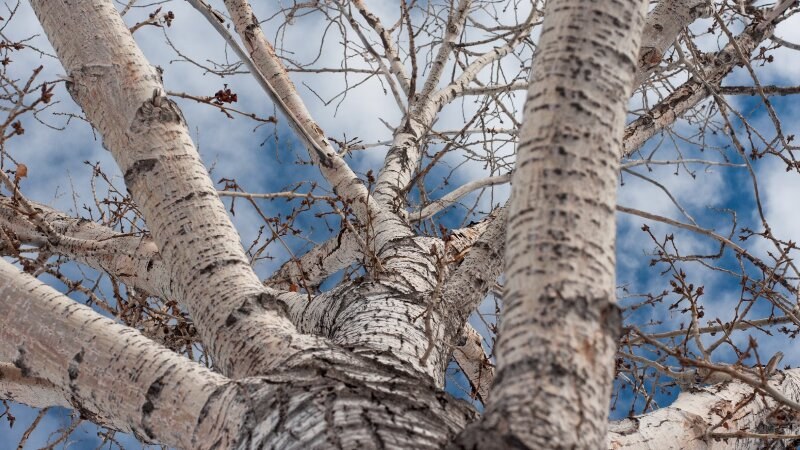
10 Things You Can Do to Manage Problematic Trees
1. Prepare Ahead of Time
Good tree care practices are different in the spring than they are in the fall. This is because trees go through cycles of growth and dormancy every year. It's important to plan ahead for the upcoming season and use the appropriate tree care techniques for the current time of year.
For example, fertilizing your trees in the winter or pruning them in the spring is not only ineffective, but it can also cause the health of your tree to decline and make branches more susceptible to breakage.
2. Know What to Look For
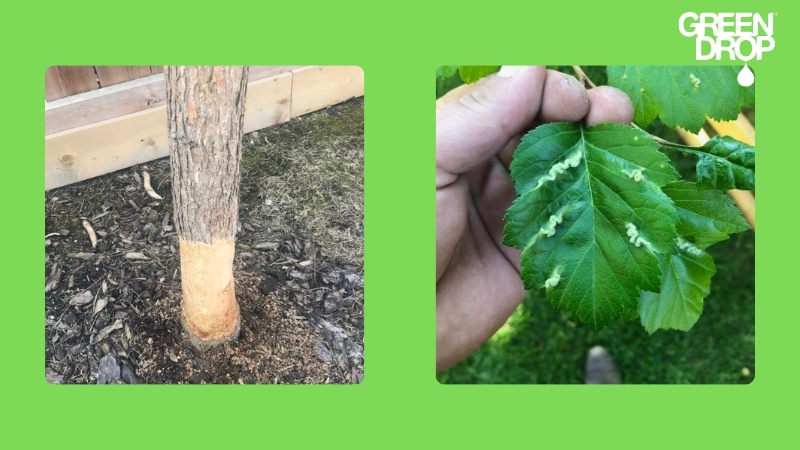
Keep an eye out for signs of tree diseases, pest infestations, crossing or snapping branches, and other indications that your tree may be at risk of breaking or leaning.
Some signs your tree is damaged or diseased and ultimately at risk of falling:
- Dead Branches: If you notice dry, brittle branches, it could indicate that the tree is in distress or diseased.
- Cracks or Splits in the Trunk: Large cracks or splits in the trunk can compromise the tree’s structural integrity, making it more likely to fall.
- Fungal Growth: Mushrooms or fungi growing at the base of the tree or on the trunk are often signs of decay and internal damage.
- Leaf Issues: Watch for leaves that are discoloured, wilting, or have unusual spots. This can be a sign of disease or pest infestation.
- Hollow or Decayed Areas: Hollow spots or areas of decay within the trunk or major branches weaken the tree and increase the risk of collapse.
- Leaning Trees: While some trees naturally lean, a sudden or pronounced lean, especially if combined with exposed roots on one side, suggests instability.
- Pest Infestations: The presence of pests like beetles, caterpillars, or borers can indicate that your tree is unhealthy and at risk.
- Root Damage: Damaged or exposed roots can destabilize the tree. Construction, soil erosion, or heavy equipment can harm the roots and affect the tree’s health.
- Bark Issues: Peeling, cracking, or missing bark can be signs of disease or damage. Healthy trees typically have intact, firm bark.
- Unusual Growths or Swellings: Burls or other abnormal growths can indicate disease or pest problems that compromise the tree’s strength.
3. Pay Attention to Large, Heavy Branches
It's a good idea to watch very large or heavy branches more closely since these are most likely to be the ones that fall first. Branches that are in dangerous places, like close to power lines or hanging over your roof, should be frequently assessed even if they’re smaller simply due to their hazardous location.
4. Check Your Trees After Storms
While there may not be much you can do to protect a tree from wind, hail, or heavy snow, you should always check them after a storm passes to make sure there is no damage.
Even if it doesn't look like your trees were harmed during the storm, be sure to listen for signs of creaking, cracking, and anything else that seems suspicious. Sometimes, storm damage is difficult to see with the untrained eye, and small fissures can easily lead to larger cracks in a short amount of time.
5. Prune and Trim Them Properly
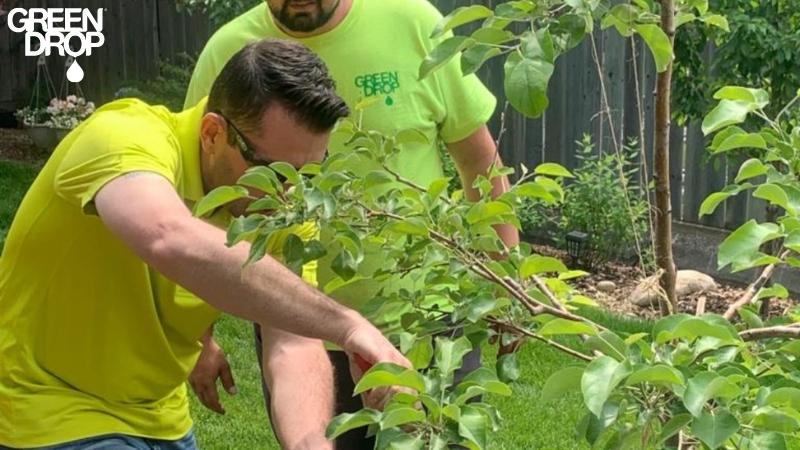
Pruning and trimming your trees help remove dead or diseased branches before they have a chance to break off. Remember that trimming and pruning are two different practices performed for different reasons.
Tree pruning is generally done for the tree's health and involves removing larger branches. On the other hand, tree trimming is mostly done for aesthetics and only removes smaller branches to help shape the canopy.
6. Preventative Measures for Pests and Diseases
Pests and diseases pose a significant threat to the health of your trees when not adequately managed. Ideally, you can prevent infections and pest infestations by taking proactive measures like:
- Treating trees with preventative fungicide
- Knowing how to identify the signs of insect and pathogen activity early on
- Having a professional assessment performed by a qualified arborist
7. Maintain Soil Quality
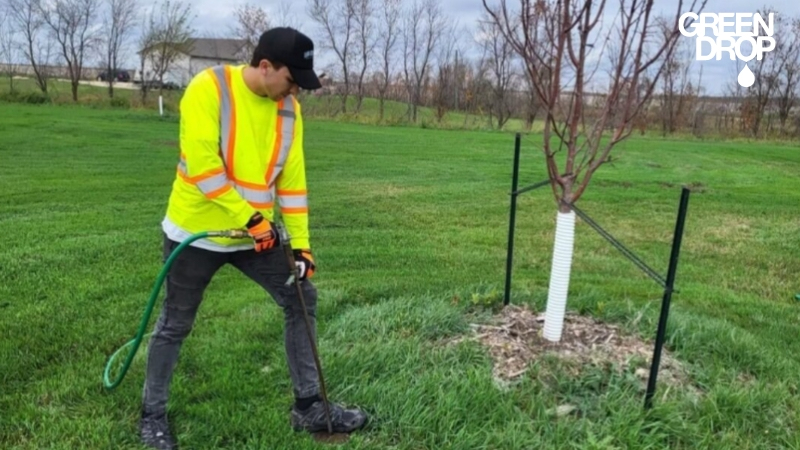
Good soil texture and composition are key to supporting your tree's root structure. Make sure you're also checking the soil around your tree from season to season to identify potential issues like poor drainage or soil compaction. With quality soil, your trees can stand tall and get the nutrients they need without worry.
8. Support Leaning Trees
Damaged trees or those in loose soil may begin to lean over time, but it may not be noticeable at first. This often happens after root girdling, which occurs when the tree's roots begin to wrap around the trunk. Without strong roots that are adequately spread out the drip line, a tree can begin to lean or fall over. These trees are particularly at risk of damaging your property after a storm.
You can check your trees by pushing on the trunk or rocking it back and forth and looking for any disturbance in the soil below. Trees that are leaning or unstable can be supported with stakes and cables that hold the tree in an upright and straight position until the roots have grown enough that the tree can stabilize itself.
9. Plant New Trees Correctly
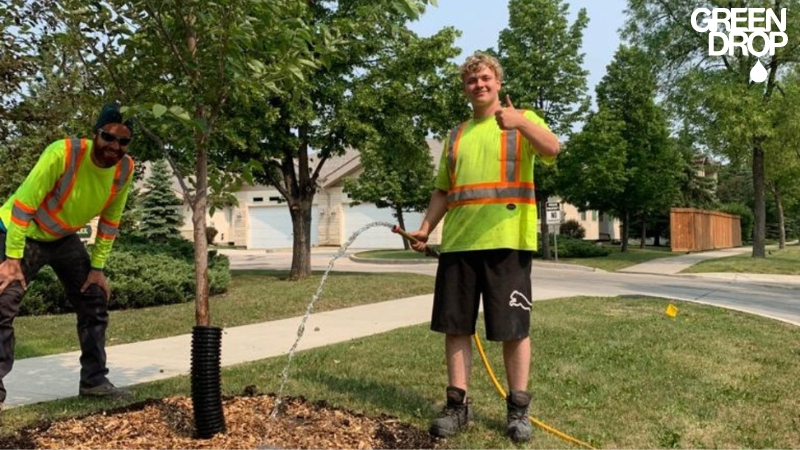
If you’re planting any new trees, there are several things to keep in mind if you want to avoid encountering these problems in the future:
- Plant the right kind of trees: You should always plant tree varieties that are a good fit for the cold Canadian climate and are resistant to pests and tree diseases that are common in your area.
- Consider the tree's maximum height and the width of its drip line before planting: Do a little research on whatever tree variety you choose to plant to estimate its size when it reaches full size. Many homeowners may plant trees without much thought about their future growth, which may lead to frustration when tree branches encroach on windows, porches, and power lines.
- Plant far enough away from your home: It’s important to consider not only how the branches will grow with the tree but also the root system. A healthy tree has relatively shallow roots extending as far as its branches are wide, so avoid planting trees in places where the root system could grow underneath your house. If this happens, the roots can interfere with your plumbing system or damage concrete driveways.
- Use proper tree care techniques: As the tree grows over time, practicing good tree care is imperative to keep it healthy and strong through its early developmental stages. Damage, stress, or inadequate nutrition at this stage can increase the chances the tree will break or fall in the future.
10. Contact an Emergency Tree Specialist
If your tree is leaning or has one or more broken branches, don't wait to contact a tree health professional. A tree or its branches can fall suddenly and without warning, potentially damaging your property or even injuring someone. A tree care expert can remove hazards and secure your tree quickly before anything bad happens.

How Our ISA-Certified Arborists Can Help Keep Your Property Safe and Beautiful
Caring for your trees is essential for maintaining a safe and beautiful property. By being vigilant and addressing any signs of damage or disease early on, you can enjoy everything your tree offers without worrying about potential hazards.
If you ever find yourself unsure about the health of your trees or need expert advice, don't hesitate to reach out. Our team of ISA-certified arborists is here to help you every step of the way. Whether you need a thorough tree inspection or emergency tree removal, we've got you covered.
With Green Drop, you never have to worry about your trees. Together, we can ensure your property remains safe, beautiful, and full of healthy, thriving trees. Happy tree caring!

